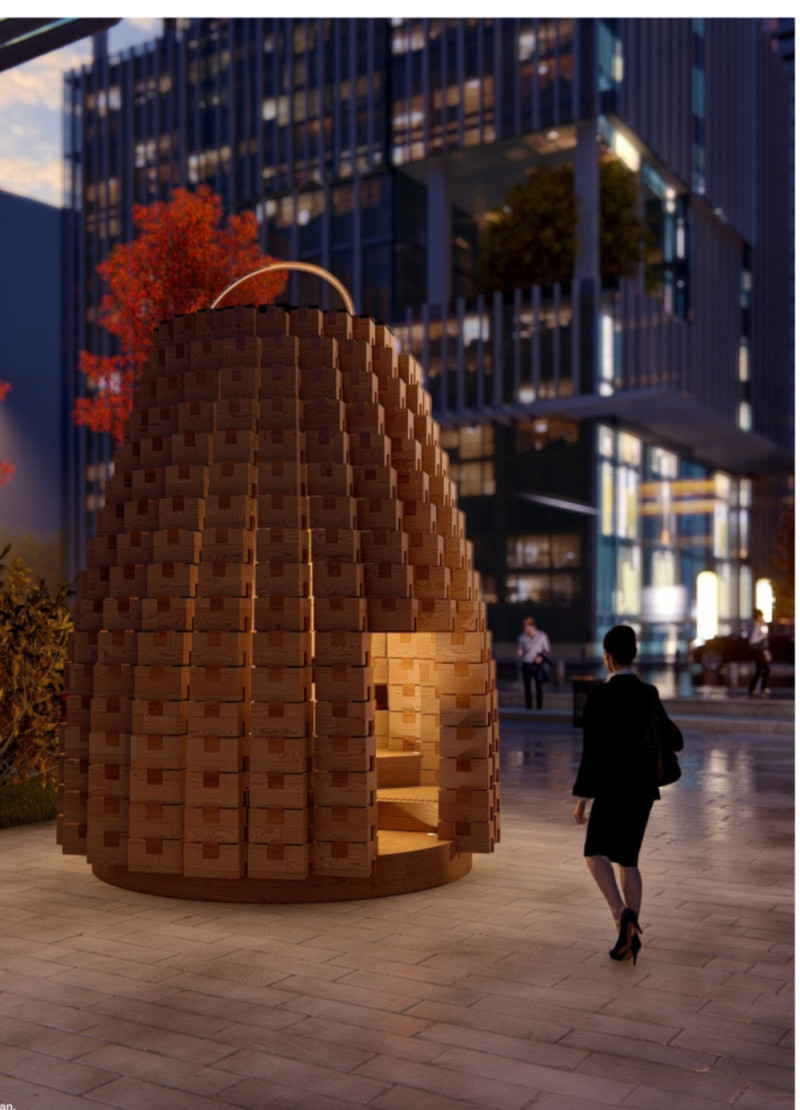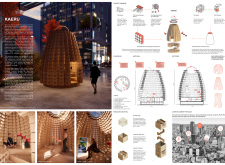5 key facts about this project
Kaeru is a cabin designed for individuals who want to disconnect from their digital devices and reconnect with themselves and others. Located in Tokyo, the building reflects a fresh approach to spatial design, focusing on the importance of human interaction in today's technology-driven world. The concept is inspired by the skin of the frog, which holds cultural significance in Japan as a symbol of returning lost things. This connection enhances the project's themes of renewal and reflection.
Permeability is a key aspect of the design, allowing for a fluid connection between the cabin's interior and its natural surroundings. The entryway actively engages users by requiring them to bend as they pass through, highlighting the act of leaving the outside world behind. Encouragement to remove footwear upon entry emphasizes local customs and deepens the tactile experience within the space.
The cabin is made up of modular units, built from solid timber panels that join together using finger box joints. This method promotes sustainability by reducing the energy and labor needed for assembly and disassembly. The modular design also allows for varied placements in different public areas, such as parks or urban settings. This flexibility caters to a range of uses while responding to the environment around it.
Inside the cabin, sensory features contribute to a welcoming atmosphere. Natural light floods in through a circular skylight, which can be opened to connect users to the outside environment, enhancing their experience. The use of reflexology pebbles along the entryway adds a tactile dimension, inviting individuals to engage more deeply with their surroundings. Thoughtfully designed storage options provide space for personal belongings while maintaining the cabin's overall intimate feel.
A Faraday cage is integrated into the box modules to block Wi-Fi signals, encouraging users to focus on personal reconnection. The design includes a chimney, a nod to traditional wooden structures often found in rural areas. This detail enriches the cabin's role as a retreat for meditation and introspection, tying modern design elements back to their cultural roots.



















































